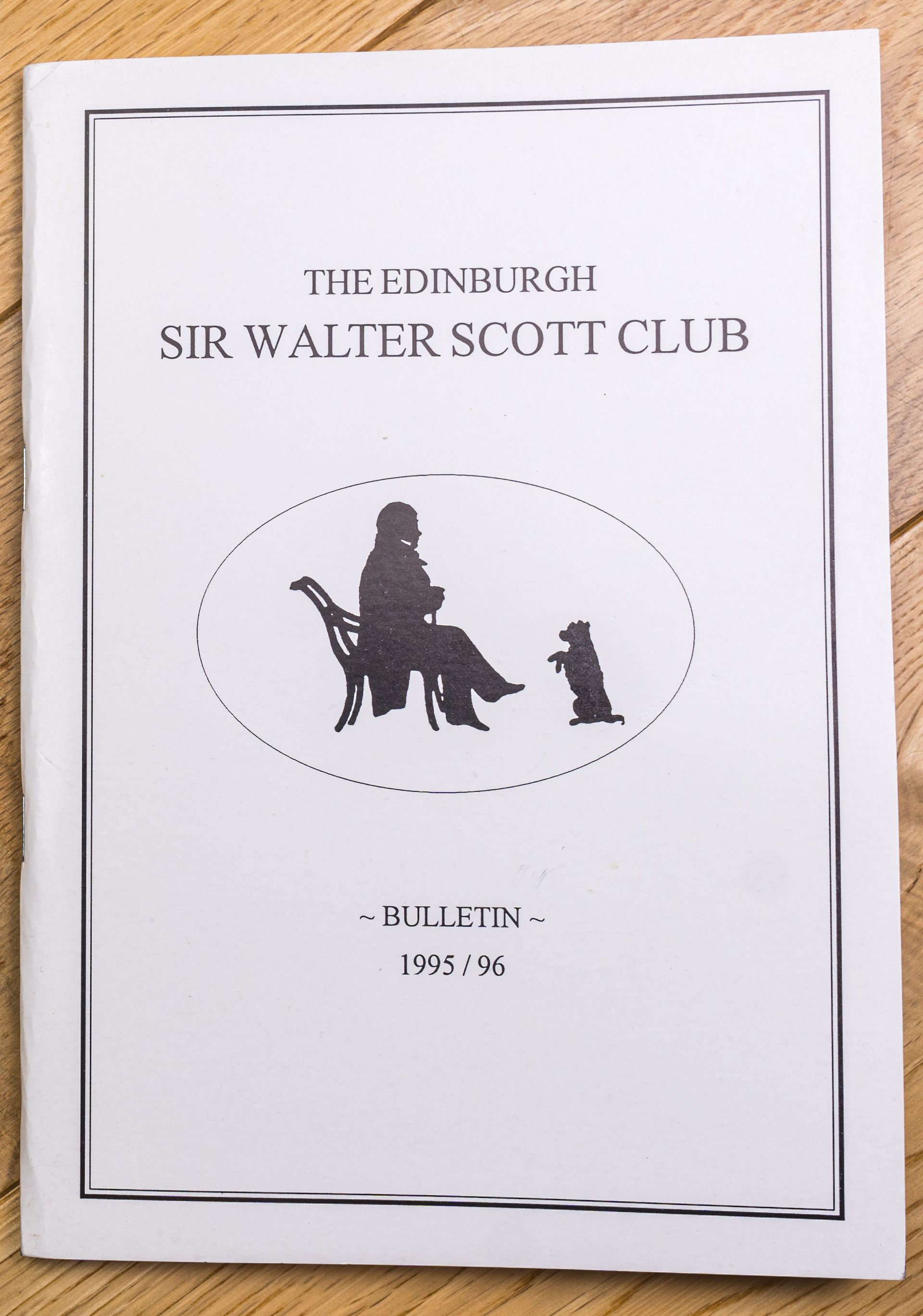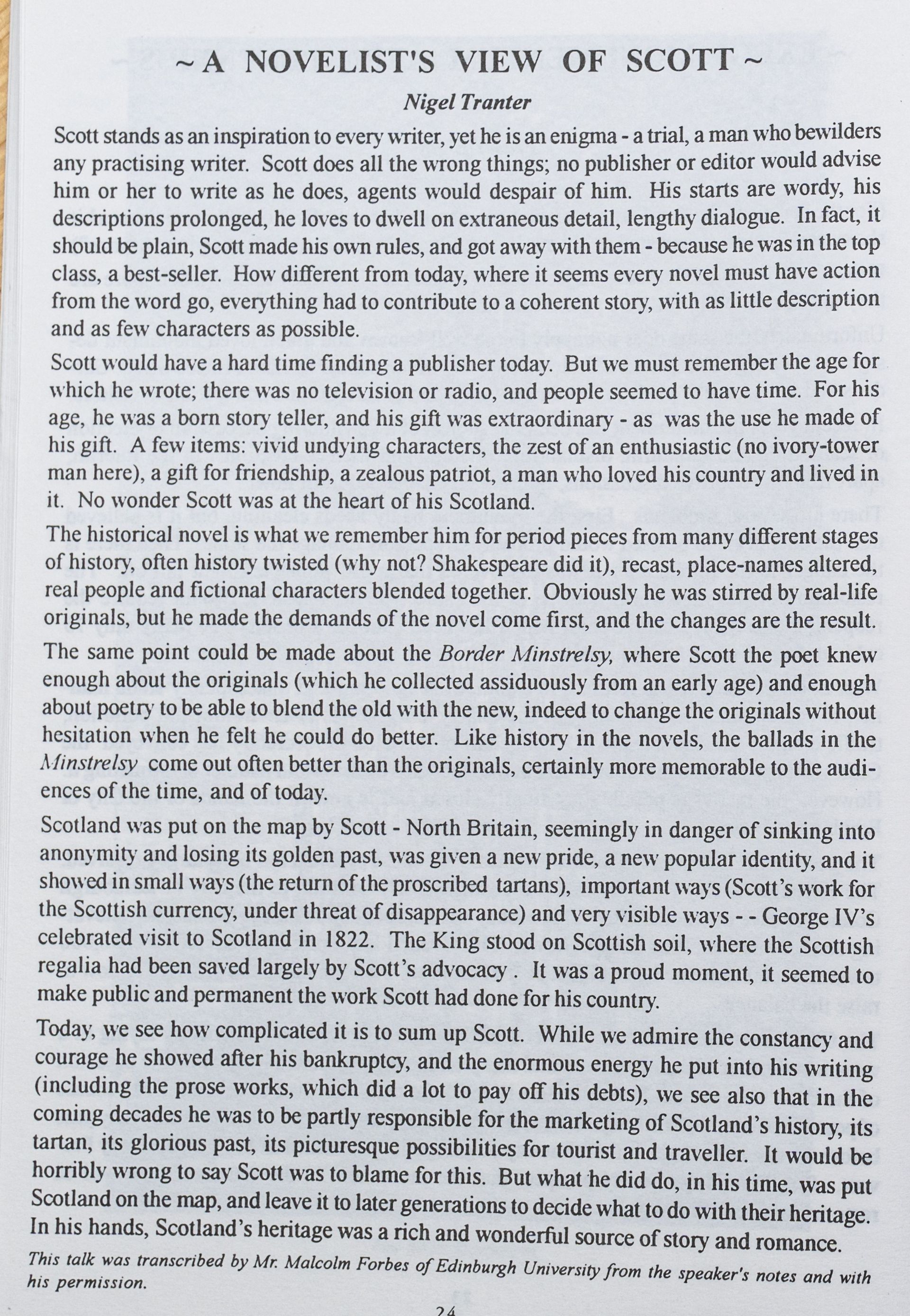A Novelist’s View of Scott
Nigel Tranter
Tuesday 2nd May 1995
Summary of the Talk:
Nigel Tranter’s talk reflects on the legacy of Sir Walter Scott, discussing his unique approach to writing and his significant contribution to Scotland's identity and literary tradition.
- Scott's Unconventional Style: Tranter highlights Scott’s nonconformity in writing—his wordy beginnings, lengthy descriptions, and extraneous detail. Despite these traits, he achieved great success, largely because he made his own rules and catered to an audience that had more time for literature, with no distractions like modern television or radio.
- The Historical Novel: Tranter appreciates Scott’s innovative approach to the historical novel. While he was inspired by real events and characters, Scott was willing to change these to serve the demands of the novel, often blending real and fictional figures. This same approach can be seen in his Border Minstrelsy, where Scott revitalized old poems and ballads by modernizing them and improving them where he saw fit.
- Scott’s Impact on Scotland: Tranter emphasizes that Scott played a crucial role in re-establishing Scotland’s pride and identity. His work revived Scotland's cultural symbols (like tartans and regalia), helped establish the Scottish currency, and his advocacy led to King George IV's celebrated visit to Scotland in 1822. He is credited with helping to create a new image for Scotland in the world.
- The Mixed Legacy: While Scott’s work is admired for its creativity and devotion to Scottish culture, Tranter points out that Scott is somewhat to blame for the commercialization and marketing of Scotland’s history, which later generations struggled to manage. His promotion of tartan, Scottish past, and tourism established a legacy that was difficult to control.
- Enduring Influence: Scott’s energy and determination, particularly after his bankruptcy, are noted as key to his success. His contributions helped shape Scotland’s image and leave a rich cultural heritage for future generations to navigate.
Interesting Points:
- Scott’s Ability to Change Originals: One of the most striking aspects of Scott’s work was his ability to adapt and alter historical facts, not just for the sake of storytelling, but to improve them or make them more suitable for his audience. This is seen in both his novels and his Border Minstrelsy, where he modernized old poetry and made them more memorable.
- Scott’s Impact on National Pride: Scott's role in reviving Scotland’s cultural symbols like the tartan, and his advocacy for the Scottish regalia, played a significant part in re-establishing Scottish national pride, especially after the nation had faced a long period of decline and loss of identity.
- The Irony of the Legacy: Tranter points to the irony that Scott, in reviving Scotland's heritage, helped create a legacy of commercialization. Though Scott was passionate about preserving Scotland's culture, his actions contributed to the marketing and commodification of Scottish history and identity, which later generations had to grapple with.
- The Complexity of Summing Up Scott: Despite the admiration for Scott, Tranter concludes that his legacy is complex. While Scott’s dedication and work were invaluable, the modern-day interpretation of his contributions is nuanced and sometimes problematic, especially in light of the commercialization of Scotland’s image.
This talk is a fascinating reflection on the complexities of Scott's literary career and his lasting influence on Scottish culture. It brings attention to the challenges of managing national identity and heritage and the tension between preservation and commercialization.
Download the [Transcript] or Read the [Bulletin]




